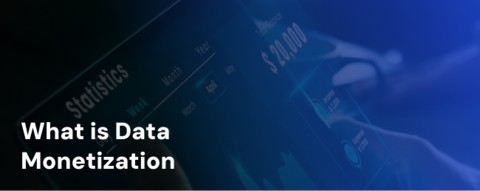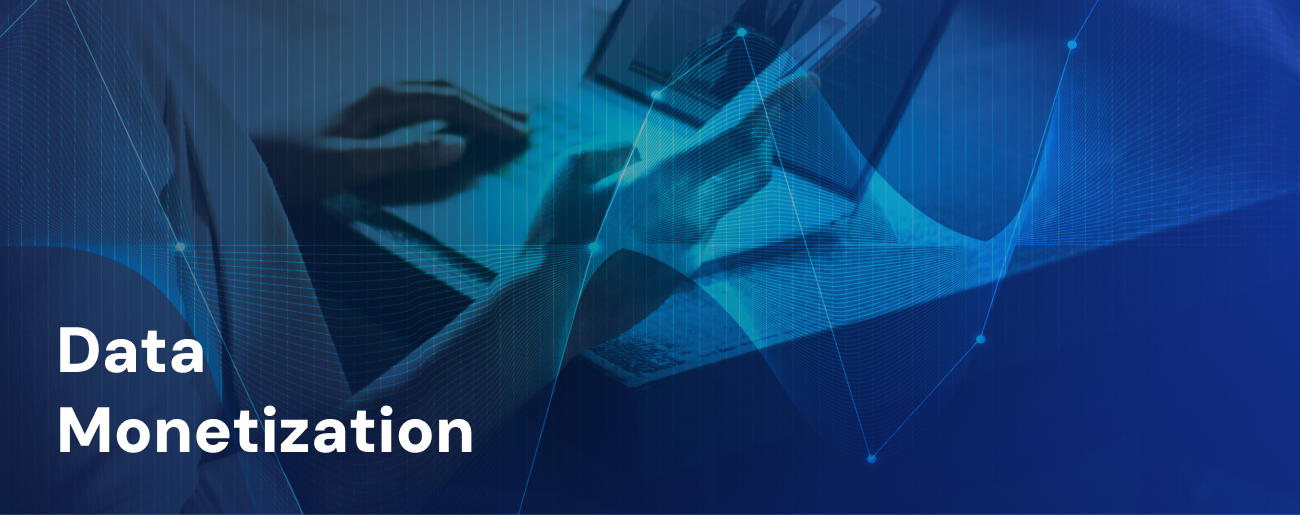Data is an asset, but its value depends on how it is used. A 2023 Gartner report found that by 2026, over 60% of large enterprises will have formal data monetization strategies in place, up from just 15% in 2023.
Data monetization refers to the process of deriving economic benefits from data. Some companies do this by selling data directly, while others use it to improve their services, optimize costs, or enhance customer experiences. Industries such as finance, healthcare, and retail are leading the way, but the potential extends far beyond these sectors.
This blog will break down what data monetization is, why it matters today, and the different ways businesses are using it to create value. We’ll also examine common challenges, effective strategies, and what the future holds in this space.
By the end, you’ll have a practical understanding of how organizations – regardless of size or industry – can approach data monetization in a way that aligns with their business goals.
What Is Data Monetization?
Data monetization is the process of converting data into economic value. This can involve generating new revenue streams, enhancing existing ones, or improving operational efficiency. There are two primary approaches to data monetization: direct and indirect.
Direct Data Monetization involves selling and/or licensing data to third parties. Companies may package raw data or offer processed insights to other organizations that find this information valuable. For example, a business might sell anonymized customer behavior data to market research firms. This approach creates an immediate revenue stream from the data itself.
Indirect Data Monetization focuses on using data internally to drive business improvements. By analyzing data, organizations can optimize operations, enhance customer experiences, and develop new products or services.
For instance, a company might analyze sales data to identify purchasing trends, enabling more effective inventory management and marketing strategies. While this approach doesn’t generate revenue directly from the data, it leads to cost savings and increased profitability.
Both strategies highlight the importance of data as a valuable asset. Whether through external sales or internal optimization, effectively leveraging data can provide significant economic benefits.
Why does Data Monetization Matter for Businesses Today
Every business collects data, but not every business profits from it. Data monetization allows companies to turn raw information into economic value – whether through new revenue streams, operational improvements, or better decision-making.
Companies are increasingly recognizing data as a financial asset. By 2030, the global data monetization market is projected to grow at a 25.8% CAGR, reaching $16.05 billion (Grand View Research). This growth reflects a shift: data is no longer just a tool—it’s a business driver.
The Two Biggest Business Impacts of Data Monetization
 Cost Efficiency & Smarter Operations
Cost Efficiency & Smarter Operations
Retailers leverage real-time customer data and predictive analytics to optimize inventory, reducing both overstock and shortages. This ensures that high-demand products remain available while minimizing excess stock, leading to lower storage costs and improved profitability.
In the financial sector, fraud detection has evolved with AI-driven transaction monitoring. Banks analyze millions of transactions per second, instantly identifying suspicious activities and blocking fraudulent transactions before they happen. This proactive approach not only protects customers but also saves institutions millions in potential losses and regulatory fines.
Beyond these sectors, manufacturing companies utilize IoT sensors and machine learning models to predict equipment failures, ensuring smarter maintenance scheduling and reducing unplanned downtime—directly impacting operational efficiency and revenue.
 Competitive Edge Through Data-Driven Decisions
Competitive Edge Through Data-Driven Decisions
Businesses that monetize and analyze their data gain a significant market advantage. With access to real-time insights, they can tailor offerings, automate pricing strategies, and anticipate customer needs before competitors do.
For example, e-commerce platforms leverage data fabric architectures to unify cross-channel data, creating hyper-personalized shopping experiences. These systems dynamically adjust recommendations, pricing, and marketing campaigns based on a customer’s real-time browsing behavior, leading to higher conversion rates and customer retention.
Similarly, subscription-based businesses analyze user engagement data to optimize retention strategies, reduce churn, and create targeted upsell opportunities—directly impacting revenue growth.
As data monetization strategies evolve, companies that effectively integrate, analyze, and act on their data will dictate industry trends. Organizations investing in AI-driven insights, business intelligence platforms, and data fabric architectures are shaping the next wave of competitive advantage.
Market Growth and Industry Adoption
- By 2026, 60% of large enterprises will have a formal data monetization strategy, compared to just 15% in 2023, according to Gartner.
- The global data monetization market is expected to grow at a CAGR of 25.8%, reaching $16.05 billion by 2030 (Grand View Research).
- Business intelligence tools and BI reporting are becoming essential for companies looking to extract value from their datasets.
Key Trends that are shaping Data Monetization
- The Rise of Data Fabric Architectures.
- Data fabric is emerging as a core enabler of scalable data monetization strategies. By providing a unified, flexible framework for data integration across platforms, data fabric helps businesses overcome data silos and unlock monetizable insights.
- Companies adopting data fabric platforms see a 30% improvement in data accessibility and a 25% increase in real-time data monetization opportunities (Forrester Research).
- AI and Machine Learning Models for Predictive Data Monetization.
- Businesses are increasingly using machine learning models to predict customer behavior, optimize pricing, and identify new revenue streams.
- A McKinsey study found that organizations that integrate ML models into their business intelligence processes generate twice the revenue from data-driven decisions compared to competitors who rely solely on traditional analytics.
- Subscription-Based Data Monetization is Gaining Traction.
- Companies are shifting from one-time data sales to ongoing subscription-based models, providing continuous insights via BI reporting dashboards and business intelligence platforms.
- According to IDC, Insight-as-a-Service (IaaS) models will account for 40% of all data monetization revenues by 2027, reflecting a move toward value-added data services over raw data sales.
Arivonix Spotlight
Meet Us at Gartner Data & Analytics Summit 2025
Interested in learning more about data monetization strategies, AI-driven insights, and real-time data processing? Meet the Arivonix team at Gartner Data & Analytics Summit 2025 from March 3–5 at the Gaylord Palms Resort & Convention Center, Orlando, FL!
What to Expect:



Visit us at booth #929, click here to register or book a meeting with us.
Challenges and Risks in Data Monetization
While data monetization offers significant benefits, it also comes with compliance, security, and ethical challenges that businesses must address.

The Challenge:
- Stricter regulations (GDPR, CCPA, HIPAA) require businesses to handle data responsibly, or risk severe fines.
Impact:
- GDPR fines totaled $1.8 billion in 2023 (DLA Piper).
- 79% of consumers worry about how their data is used (Cisco).
Solution: Implement data governance frameworks and data fabric architectures to track data usage, consent, and security protocols.

The Challenge:
- Inaccurate or outdated data leads to poor business intelligence and faulty analytics.
Solution: Use data fabric platforms to automate data cleansing and validation before monetization.

The Challenge:
- Selling or sharing data without transparency erodes trust.
Solution: Ensure data anonymization and ethical AI use to maintain consumer confidence.

The Challenge:
- Monetized data is a prime target for hackers, especially through APIs and third-party integrations.
Impact:
- The average cost of a data breach hit $4.45M in 2023 (IBM).
Solution: Encrypt all monetized data and apply Zero Trust security models.

The Challenge:
- Legacy systems don’t integrate well with modern data monetization strategies.
Solution: Adopt data fabric to unify cross-platform data and enable AI-driven insights.
To succeed in data monetization, businesses must prioritize compliance, cybersecurity, and data integrity while leveraging data fabric architectures and business intelligence tools to streamline operations.
The Future of Data Monetization
The future of data monetization is shaped by AI, automation, and real-time data processing. Companies that invest in data fabric architectures, machine learning models, and business intelligence tools will stay ahead.



